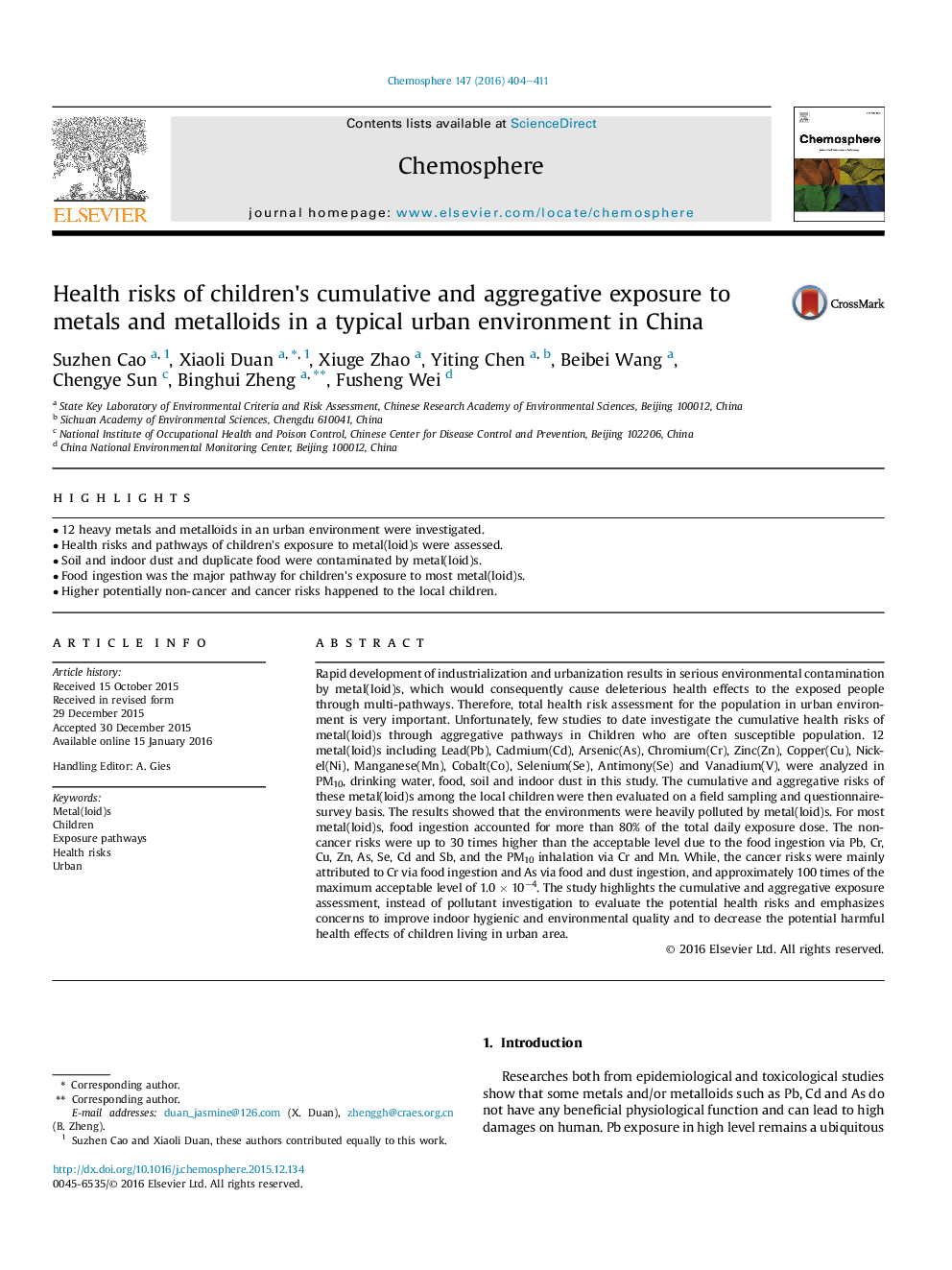| Article ID | Journal | Published Year | Pages | File Type |
|---|---|---|---|---|
| 4408047 | Chemosphere | 2016 | 8 Pages |
•12 heavy metals and metalloids in an urban environment were investigated.•Health risks and pathways of children's exposure to metal(loid)s were assessed.•Soil and indoor dust and duplicate food were contaminated by metal(loid)s.•Food ingestion was the major pathway for children's exposure to most metal(loid)s.•Higher potentially non-cancer and cancer risks happened to the local children.
Rapid development of industrialization and urbanization results in serious environmental contamination by metal(loid)s, which would consequently cause deleterious health effects to the exposed people through multi-pathways. Therefore, total health risk assessment for the population in urban environment is very important. Unfortunately, few studies to date investigate the cumulative health risks of metal(loid)s through aggregative pathways in Children who are often susceptible population. 12 metal(loid)s including Lead(Pb), Cadmium(Cd), Arsenic(As), Chromium(Cr), Zinc(Zn), Copper(Cu), Nickel(Ni), Manganese(Mn), Cobalt(Co), Selenium(Se), Antimony(Se) and Vanadium(V), were analyzed in PM10, drinking water, food, soil and indoor dust in this study. The cumulative and aggregative risks of these metal(loid)s among the local children were then evaluated on a field sampling and questionnaire-survey basis. The results showed that the environments were heavily polluted by metal(loid)s. For most metal(loid)s, food ingestion accounted for more than 80% of the total daily exposure dose. The non-cancer risks were up to 30 times higher than the acceptable level due to the food ingestion via Pb, Cr, Cu, Zn, As, Se, Cd and Sb, and the PM10 inhalation via Cr and Mn. While, the cancer risks were mainly attributed to Cr via food ingestion and As via food and dust ingestion, and approximately 100 times of the maximum acceptable level of 1.0 × 10−4. The study highlights the cumulative and aggregative exposure assessment, instead of pollutant investigation to evaluate the potential health risks and emphasizes concerns to improve indoor hygienic and environmental quality and to decrease the potential harmful health effects of children living in urban area.
